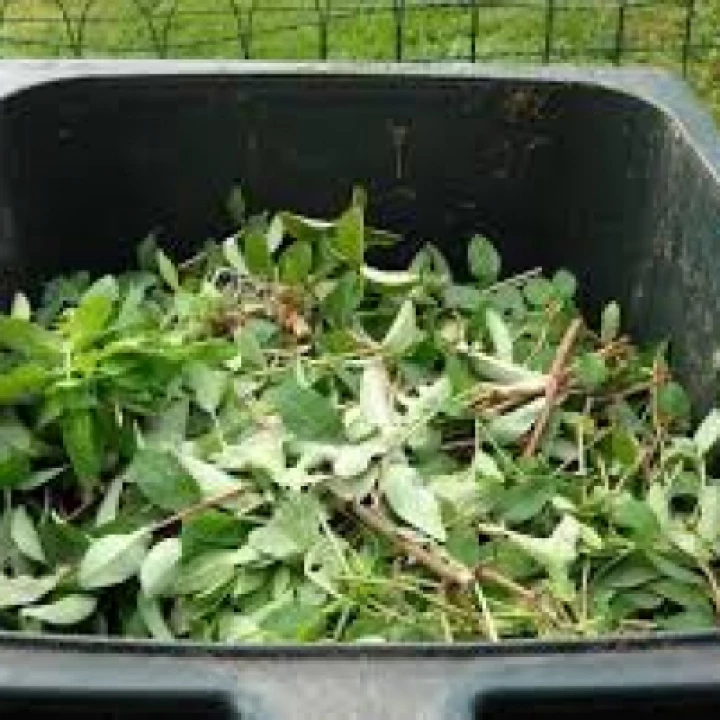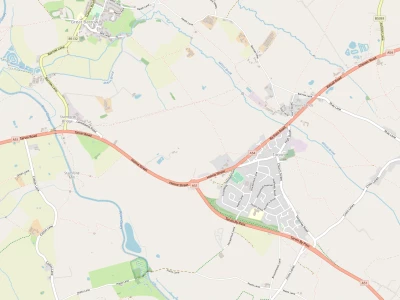Dandelion
Taraxacum officinale
It was when I did a walk through the woodland to see just how many wild flowers I could find that I realised that I regularly walk past one of our wild flowers without even noticing it. In Tarvin, the dandelion is totally ubiquitous – you find it everywhere: in hedges, lawns, gutters, pavements, on neglected land and in cultivated borders, not to mention throughout the woodland. We call the dandelion a weed – the plant that is in the wrong place – but it is the fact that it seems to get into EVERY place that makes it so remarkable. That is why, this time, I am writing about a botanical success story – the pretty yellow flowers and "puff-ball clocks" that we are all so keen to eradicate from our gardens but that keep on popping up none-the-less.
The English name, dandelion, is a corruption of the French 'dent de lion', meaning "lion's tooth", referring to the plant's coarsely toothed leaves. It also has a rather rude folk name: "pee-the-bed", a warning about the strongly diuretic result of consuming the plant's roots. The entire plant, including the leaves, stems, flowers, and roots, is considered to be both edible and nutritious (although possibly having some harmless but embarrassing pharmacological effects!) Raw dandelion greens contain high amounts of the vitamins A, C, and K, and are sources of the minerals calcium, potassium, iron, and manganese. No wonder rabbits like them!
However, none of this explains why dandelions are so spectacularly successful. Their success hinges on three remarkable abilities. The first is in the structure of the flowers. Each dandelion head is actually a group of hundreds of tiny flowers (florets), with the whole structure being described as a composite. Each single floret can be pollinated by insects in search of nectar and will thereafter form a seed, attached to its "parachute". Where the dandelion wins out is that any small floret that has not been pollinated by an insect can manage, by clever engineering, to pollinate itself! Therefore, all of the florets in the head will be able to form a seed, whether they have been insect-pollinated or not.
The second ability leading to success that the dandelion has lies in its seed-transporting "parachutes" which, because of their lightness, can carry the seed great distances on the merest breath of wind. After flowering is finished, the dandelion flower head dries out for a day or two. The dried petals and stamens in each floret drop off, the bracts (beneath the flower – acting rather like sepals) curve backwards and the parachute ball opens into a full sphere. When development is complete, the mature seeds are attached to white, fluffy "parachutes" which easily detach from the seedhead and glide on the wind, dispersing them widely. It is by this means that dandelions are able to colonise freshly-turned earth before many other plants. Add to this the ability to germinate in the most unlikely of situations and it is clear that the dandelion is definitely a winner!
The third advantage that the dandelion has is one which you have surely come across yourselves, perhaps without realising it. The plant grows a rosette of leaves at the top of a very lengthy tap root. Attempting to dig up the plant is likely to break the tap root and it has been found that the plant can re-generate from as little as a 1cm piece of tap root left in the ground. Even more surprisingly, if the 1cm-long piece of tap root is allowed to sit outside in the sunshine to dry it out, and is desiccated until it has lost 60% of its weight, it can still re-grow! Now that is the mark of a plant that will cling to life with an almost unbelievable tenacity!
Dandelions are thought to have evolved about 30 million years ago in the ancient continent of Eurasia, fossil seeds having been recorded in the Pliocene rocks of southern Russia. During their lengthy existence, many creatures have come to rely on them for food. The seeds are an important food for small seed-eating birds such as linnets and they provide a source of nectar and pollen early in the season for many wild bees and for butterflies which emerge early in the spring. Their leaves serve as food for many hatching butterfly and moth larvae.
However, the humble dandelion has recently been attracting attention from scientists, who are interested in the white, sticky sap which they exude when their tissues are cut or broken. In common dandelions, this latex is not plentiful but modern cultivation methods have produced varieties that are suitable for the commercial production of natural rubber. In May 2019 German tyre-maker Continental AG announced it was about to begin production of the "first bicycle tyre made with sustainable rubber from dandelions", which it intended to grow on the grounds of its own manufacturing plants.
There is so much more to dandelions than might ever be guessed when you are trying to clear them out of your lawn. While being a pest (yes – I view them as weeds, too), one can only admire the ways in which this very ordinary plant has managed to ensure its quite extra-ordinary success! And you can, of course, use the 1cm business to your advantage. Whip as much as you can out, let the bit of tap root send up a new rosette – and whip it out again – and again. Eventually, in a war of attrition, you can win. The question is – who has more tenacity – you or the dandelion?
Quick Links
Get In Touch
TarvinOnline is powered by our active community.
Please send us your news and views.










